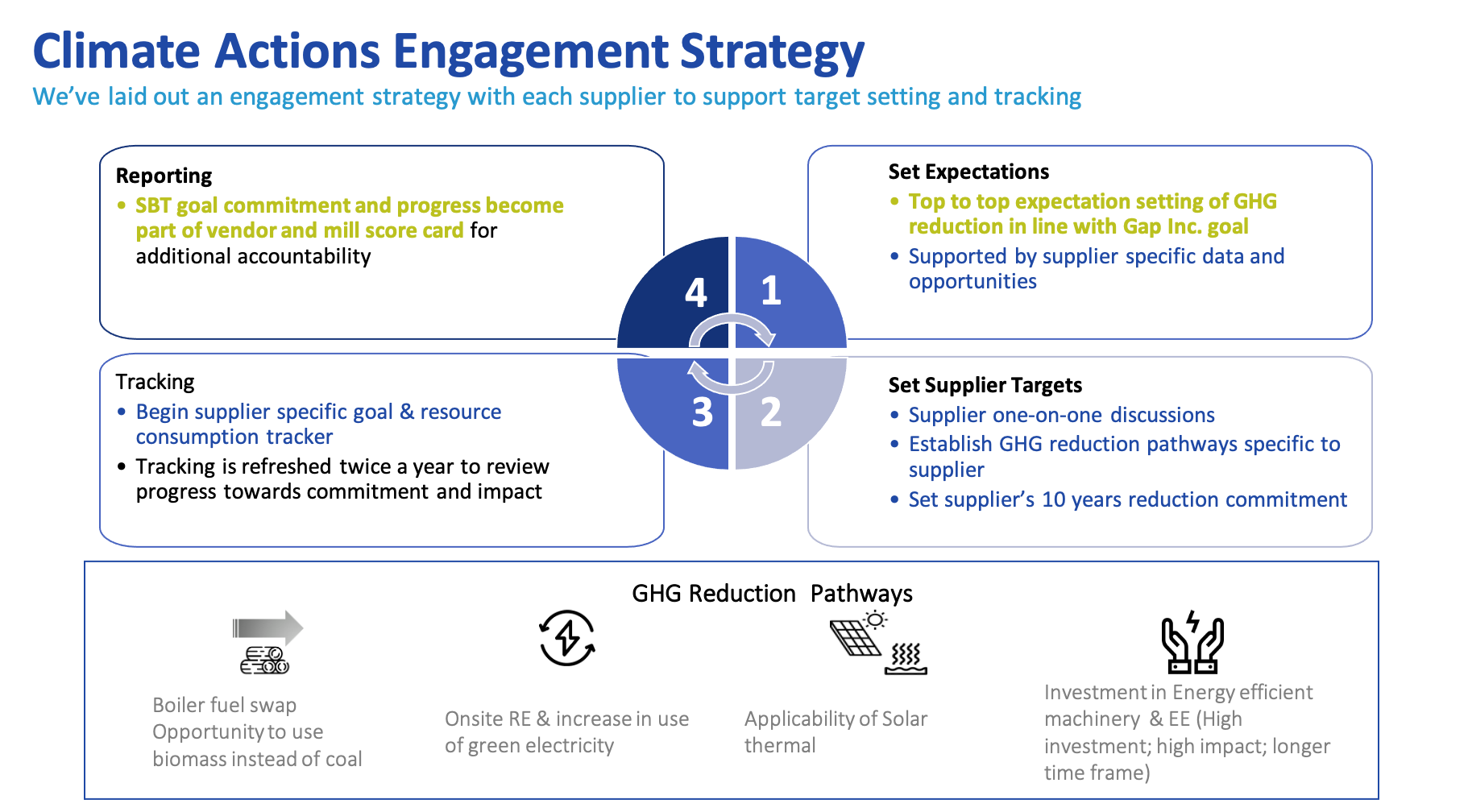In 2020, Gap announced its science-based target for reducing emissions:
Gap Inc’s long-term goal is to achieve carbon neutrality across its value chain by 2050, in short-term, to reduce absolute scope 1 and 2 GHG emissions 90% and scope 3 GHG emissions from purchased goods and services 30% by 2030 from a 2017 base year. Gap Inc. also commits to increase annual sourcing of renewable electricity from 0% in 2017 to 100% by 2030 for its owned and operated facilities globally.
To support the company goal, Gap has been doing lots of works in its supply chain in the past years:
Since 2013, Gap had been working with NRDC/Clean by Design, nominated facilities for each Clean by Design cohort. Later, after Aii stepped into the CbD management, Gap was serving as one of the founding members of Aii, and taking a leadership role, in piloting the program expansion to more countries / areas, and also drove the development of Aii’s CbD plus program, which supports wet processing facilities more advanced-level programming.
Between 2013 and 2021, Gap has nominated 52 facilities to participate in various resource efficiency programs, including Clean by Design, Clean by Design Plus, Chemistry & Wastewater Management (in India) and Carbon Leadership Program. These facilities, which are responsible for Tier 1 (finished product assembly) and Tier 2 (material production) of the supply chain across different sourcing regions, e.g. Mainland China, Vietnam, India, Pakistan and Taiwan, China.
Nanhua case, in 2018, a Gap’s dyeing mill which is located in Suzhou joined the CbD project, with the supports of Aii’s expert team and actively cooperated by the facility management, they made the outstanding improvement on the following aspects: water management, chemicals reuse, equipment upgrade and process improvement. Finally, they achieved around 70% on water saving, 30% of the energy saved, and 30% CO2 reduced, the ROI (Return of Investment) was around 10 months.
Those projects made significant reduction in carbon, energy, water and cost.

During the carbon reduction journey, we realize that more effort and resource are needed to support company’s long-term carbon reduction goal. Thus, we partner with several consultants to engage with our key suppliers to establish long term GHG reduction strategies and explore renewable energy opportunities at supply chain. This “Climate Engagement Program” covers 29 key T1 and T2 vendors with 130 facilities to identify their maturity stage on GHG reduction and Renewable Energy approaches, analyze collected data and advise on improvement solutions.
Climate Engagement Program: (the strategy and path of reducing the carbon emission)


Renewable energy approach: (the possible ways to renewable electricity)

Protecting our planet is fundamental to Gap’s sustainable business strategy and central to the company’s future. Gap is taking steps every day through incorporating sustainability into product design and partnering with business, nonprofit, governmental and community organizations to build a healthy place to thrive for generations to come.
(The above content was provided to IPE by the brand, who is responsible for the accuracy of the data.)